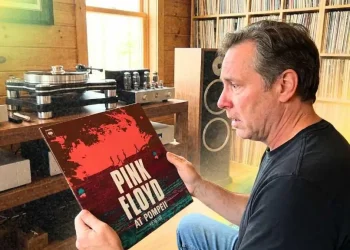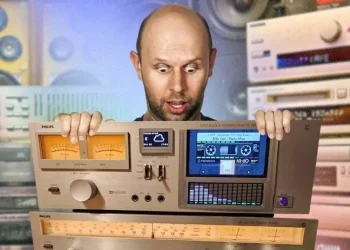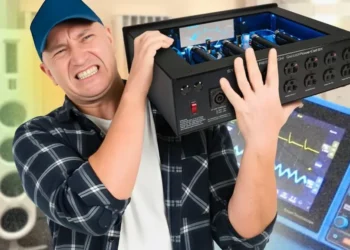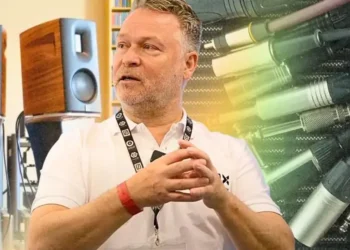10 Vintage Audio Myths That Are Draining Your Wallet and Wrecking Your Sanity
Some myths refuse to die — and sellers are counting on it.
If you’ve dipped a toe into the world of vintage audio, you’ve probably heard it all: “They don’t make them like they used to,” or “You need 200 watts for 200-watt speakers.” The gear is cool, no doubt — big knobs, glowing meters, and the satisfying clunk of a heavy switch — but that doesn’t mean all the advice out there is sound.
In fact, many newcomers fall for expensive myths that can leave them broke, confused, and frustrated. Here are 10 of the biggest traps — and what you actually need to know before you spend a dime.
1. “They Don’t Make Stereo Equipment Like They Used To”
Sure, those 1970s receivers look like tanks. And yes, a lot of modern gear feels plasticky. But that doesn’t mean great gear isn’t being made today — it just lives in a different part of the market.
Back in the day, a top-tier Marantz or Pioneer might cost $1,200. Adjusted for inflation, that’s over $6,000 today. Brands like McIntosh, Luxman, Accuphase, and Yamaha still make stunning, audiophile-grade gear. You just won’t find it at your local big-box store.
Bottom line: You can absolutely buy gear built to the same standards (or better) — if you’re willing to pay high-end prices. Don’t confuse mass-market gear with the whole industry.
2. “You Need a 200-Watt Amp for Your 200-Watt Speakers”
This one’s a classic money pit. That “200W” label on your speaker? It just means the maximum it can handle, not what it needs.
Most people only use 5 to 10 watts when listening at home. Even cranking it for a party, you might only hit 30 watts with moderately efficient speakers. The number that really matters is sensitivity, not power.
Don’t fall for the “bigger is better” trap — most of the time, it just means “more expensive and unnecessary.”
3. “Vintage Audio Is Rare and Only Getting Scarcer”
You’ll hear this from sellers trying to justify inflated prices. But the truth? Most vintage gear isn’t rare — it was mass-produced in huge numbers.
Brands like Sansui, Marantz, and Pioneer shipped millions of units in the ’70s and ’80s. And now, as boomers downsize or pass on their collections, more of that gear is showing up in estate sales, Craigslist, and Facebook Marketplace.
Yes, a few specific models are rare. But the average unit? There are still plenty out there. Be patient, stay alert, and avoid the panic-buy mindset.
4. “The Value Will Only Go Up”
Sorry, but vintage gear is not the next Bitcoin. A few flagship models may hold or gain value, but most were never rare to begin with — and prices are already softening.
The core buying audience (mostly Gen X and boomers) is aging out of collecting. Younger audiophiles often prefer compact streamers, headphones, or Bluetooth setups.
If you’re buying for the love of music, go for it. But don’t expect your mid-range receiver to fund your retirement.
5. “Recapping Destroys the Vintage Sound”
This one’s part science fiction, part nostalgia. Some insist that replacing original capacitors kills the “mojo.” But in reality, old capacitors drift, leak, and degrade your sound.
Recapping restores the original performance — the sound the designers actually intended. That soft, hazy tone some collectors love? Often it’s just dying electronics.
A professional recap might run $250–$400, but it can save you from a total failure (and from losing irreplaceable parts). It’s not sacrilege — it’s maintenance.
6. “70s Solid-State Gear Sounds Just Like Tubes”
Nice idea, but not quite. Tube amps and solid-state amps behave very differently. Tubes tend to add pleasant, smooth distortion. Solid-state is generally more precise — and when it distorts, it’s harsher.
Some ’70s gear, like Marantz or Sansui, leaned warm. But none of it truly mimics tube sound. If that buttery tube warmth is what you want? Just buy a tube amp.
7. “Vintage Sound” Is Always Better
“Vintage sound” has become a buzzword, but let’s be real — a lot of that character comes from worn-out parts, not timeless engineering.
Back when these amps were new, the goal was clean, accurate sound. What we now call “warmth” was often unintended — a byproduct of aging components like leaky capacitors.
If you like that softer, nostalgic tone, that’s valid! Just know it often comes at the cost of performance and reliability — and usually requires expensive servicing.
8. Digital vs. Analog: “Digital Is Always Worse”
The digital vs. analog debate is heated — but most of what you’re hearing comes from mastering choices, not the format itself.
Vinyl tends to sound warmer partly because it’s mastered more gently. Digital releases can be compressed or harsh, especially when aimed at earbuds or car speakers.
But well-mastered digital? It’s stunningly accurate. And if you like analog’s character — the tape hiss, the warmth — that’s cool, too. Just know that it’s a preference, not an absolute.
9. “If It Powers On, It’s Fine”
Powering on doesn’t mean it’s healthy — just like a car can start with no brakes.
Old gear can “work” while still having serious issues. Dying capacitors, out-of-spec resistors, and dry solder joints can hurt sound quality or even fry critical components. And that’s before we even mention fire hazards or electric shocks.
Rule of thumb: if the gear hasn’t been serviced, budget 20–30% of the purchase price for repairs.
10. “You Can’t Mix Vintage and Modern Gear”
This myth keeps people boxed in. But the truth? Mixing eras is totally doable — and often smart.
Want to stream Spotify on a 1970s receiver? Get a DAC (digital-to-analog converter). Want your vintage amp to play TV sound? Use an optical-to-RCA converter.
With a little planning, you can build a system that blends the warmth of vintage with the convenience of today — no compromises needed.
Bottom Line: Don’t Let the Myths Make the Decisions for You
Vintage audio can be incredibly rewarding — rich in history, sound, and aesthetic. But it’s also full of half-truths, outdated advice, and seller-driven hype. If you’re in it for the music and the joy of the gear, stay curious — and don’t be afraid to question the lore.
You’ll spend less, stress less, and get way more out of the journey.
This article was rewritten by JournosNews.com based on verified reporting from trusted sources. The content has been independently reviewed, fact-checked, and edited for accuracy, neutrality, tone, and global readability in accordance with Google News and AdSense standards.
All opinions, quotes, or statements from contributors, experts, or sourced organizations do not necessarily reflect the views of JournosNews.com. JournosNews.com maintains full editorial independence from any external funders, sponsors, or organizations.
Stay informed with JournosNews.com — your trusted source for verified global reporting and in-depth analysis. Follow us on Google News, BlueSky, and X for real-time updates.













